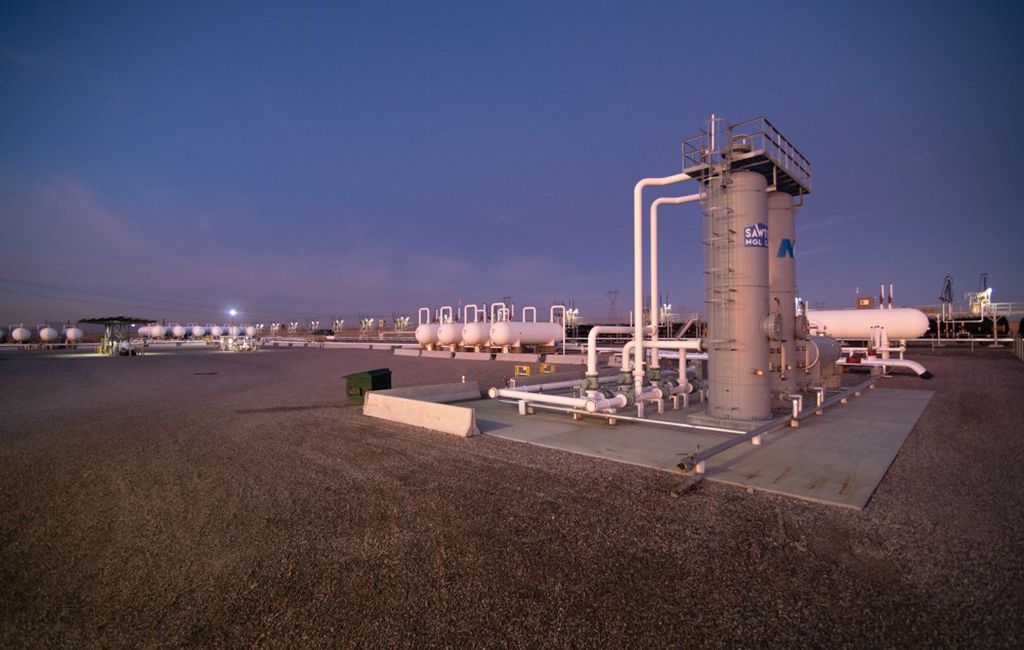
Some 3,000 feet under Millard County lies a massive dome of salt, two miles across and a mile thick, that is becoming a major pivot point in Utah’s energy future.
Its five existing caverns, capable of holding up to 6 million barrels, were hollowed out in 2014 and have been storing propane and other natural gas liquids, or NGLs, such as butane.
But the operator plans to expand the types of fuels it takes and its caverns into an all-purpose storage facility where producers park their output during times of low demand when people aren’t driving as much or heating their homes.
“There’s seasonality to demand, but production is continuous. NGLs are produced all the time. The highest demand is in the winter,” Sawtooth COO Dave Robinson told Utah regulators last year during a hearing. “Similarly with refined products, the gasoline driving season is summer, so refiners in this area have excess capacity in the winter to produce.”
One of the caverns is now available to take refined fuels and Sawtooth has permits in place to begin storing diesel and gasoline from refineries in Salt Lake City and California early next year, according to Robinson.
“The flip side is it benefits consumers to ensure availability and smooth out the pricing,” Robinson said in a recent interview. “When supply is short, prices tend to spike.”
Sawtooth Caverns is located eight miles north of Delta, near the Intermountain Power Plant on land owned by the Utah School and Institutional Trust Lands Administration, or SITLA. The agency acquired the land from the Bureau of Land Management in a massive land swap 20 years ago with the intent of developing its underground salt dome, a rare feature in the West. This geological structure is the site of the major hydrogen energy project proposed by Magnum Development.
The Utah Board of Oil, Gas and Mining recently authorized Sawtooth Caverns to store refined fuels and hollow out five additional caverns. Its order was issued over concerns raised by a retired mining geologist who believes seismic faults could pose a risk should they breach the caverns. That could allow fuel to escape into the ground and contaminate water sources, according to Jack Bloom, whose career in engineering geology spanned 30 years, most recently at Kennecott Utah Copper.
The salt dome sits about 40 miles west of the Wasatch Fault’s Levan segment, which last unleashed a major quake 1,000 years ago. Since 1901, five quakes exceeding magnitude 5.1 have occurred within 75 miles of the dome, Bloom wrote in a 2019 letter to the oil and gas board.
“According to the Utah Geological Survey, these fault zones are active and capable of large earthquakes,” he testified before the board. “A dynamic stability analysis needs to be conducted using a three-dimensional method to assess what the risk would be to the salt dome and the caverns if there were to be a major earthquake.”
Bloom is also concerned about a 20-foot-thick “anomalous zone” cutting through the dome at a 35-degree angle. This zone could represent a point of weakness and should be probed by drilling into it.
Sawtooth lined up numerous experts who convinced the board that Bloom’s concerns were unfounded, but Bloom continues to argue that additional studies are in order before additional caverns are mined.
The caverns have been engineered to the energy industry’s highest standards and have been operating for the past five years without any safety issues, Robinson said. The company has put up a $1 million bond.
About 70% of the propane and butane Sawtooth currently takes arrives by rail, the rest by truck.

